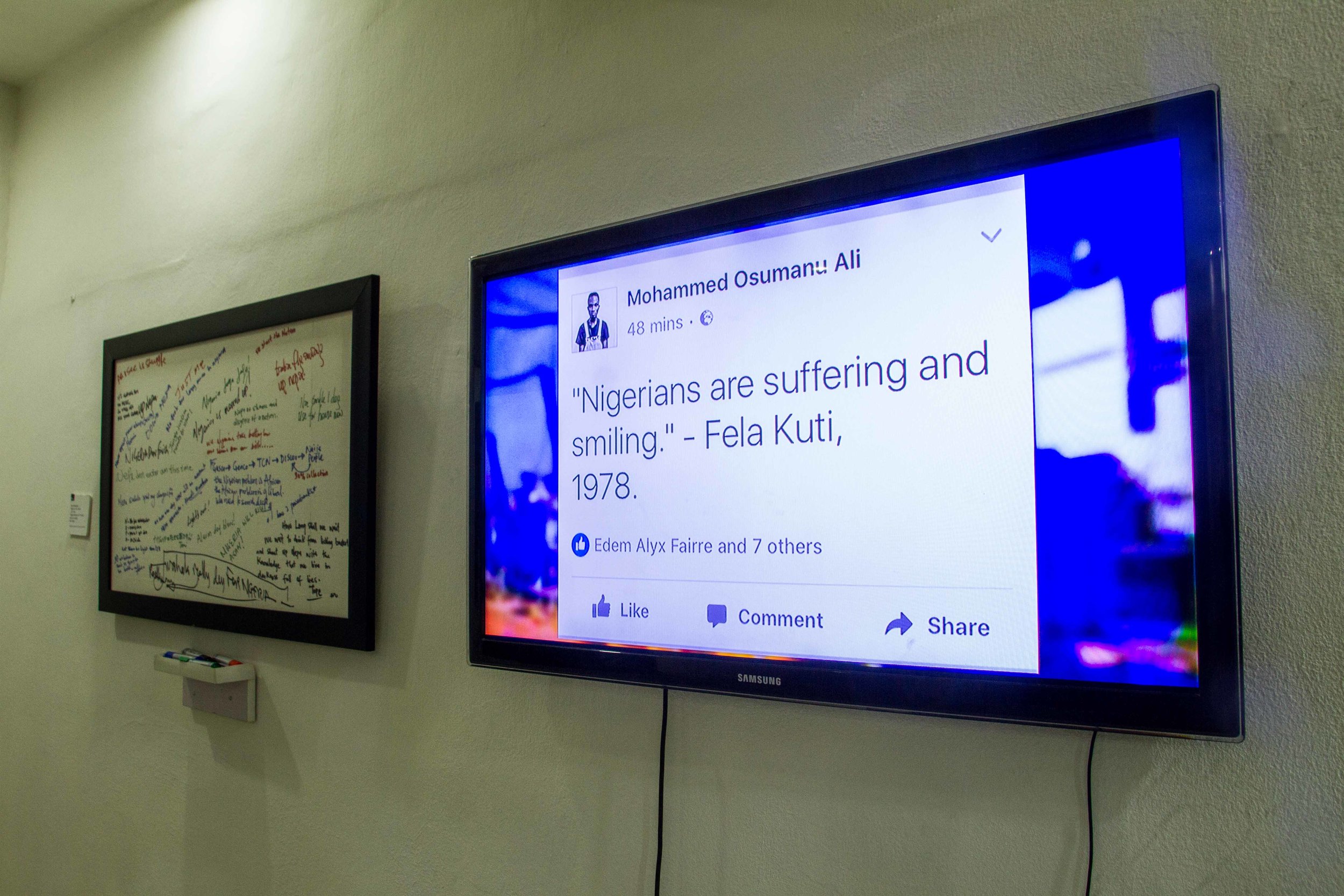










Power Show I
Curator: Erin M. Rice
Omenka Gallery, Lagos (Nigeria)
3 - 21 February 2018
This project examines the nuances of the word “power,” in the context of Nigeria where electrical power cuts are a daily occurrence and fuel shortages are common even as the nation is rich in oil. Inspired by Fela Anikulapo Kuti’s song of the same title, the show also exam- ines power in the sense of authority and its corruptibility, especially where these multiple forms of power overlap.
The irony is not lost on anyone living in Nigeria without power amidst the humming of generators that the nation is the largest producer of oil in Africa. It may seem even redundant to address an issue so entrenched in daily life in the context of art, but for Akínwándé the issue is precisely this entrenchment and the complacency that comes when having no power or waiting in long lines for fuel is so commonplace that it is no longer a source of anger. Rather when the power comes back on it becomes a moment to praise “NEPA”, the nation’s energy provider.
Akínwándé seeks to channel both the frustration and the ordinariness of this situation. The works presented in ‘Power Show’ span mul- tiple media and subjects to use the familiarity of found objects, such as the blue generator tanks and the NEPA bill, to expose the ways that a lack of (electrical or gas) power and powerlessness go hand in hand. Works such as “The Shrine” evoke the way that power outag- es have become so entrenched in life in the city of Lagos and Nigeria at large, that recent architecture factors the presence and constant humming of generators into its design. As the rich find ways to cope with generators and inverters that they have the financial resources to keep running continually, the work serves as a reminder that when the lights go out it is most detrimental to Nigerians who are already vulnerable, who may use chains and cages and other means to protect their source of energy, creating, in effect, a shrine.
‘Power Show’ represents a pivotal turn in the early career of Akínwándé and the fruits of an intensively experimental and creative 18 months. In mid-2016, Akínwándé made the decision to branch out from the medium of photography in which he was working exclusively at the time. This decision came as a result of his participation in the Centre for Contemporary Art, Lagos’ residency program titled Asiko, which took place in June-July 2016 in Addis Ababa, Ethiopia. Encouraged by Asiko faculty to push the concept of the ‘Fuel Scarcity’ pho- tographic series in a new material direction, Akínwándé returned to Lagos with new ideas, and the motivation to experiment in forms from performance, installation, and sound.
Inspired by precedents in the Lagos art world, namely the ‘State of the Nation’ exhibition by Ndidi Dike (2013), Victor Ehikhamenor’s ‘Wealth of Nation’ (2015), Uche James-Iroha ‘Powers and Power’ (2014), and the politically charged performances of Jelili Atiku, Akínwándé’s new work is both indebted to these influences and marked by his own experiences and his unique perspective on the Nigerian condition.